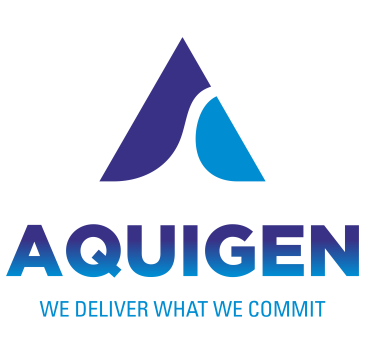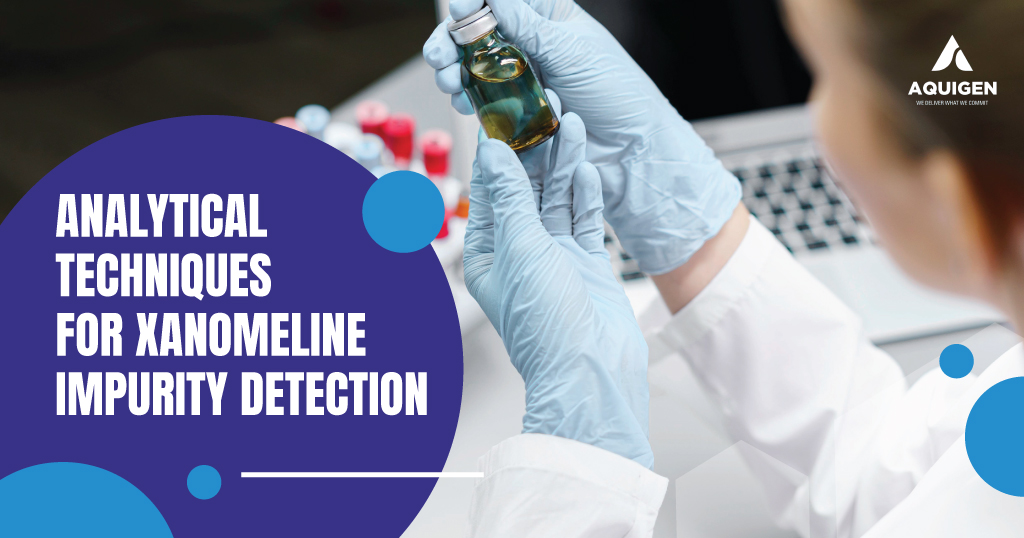Today’s pharmaceutical landscape demands the highest levels of precision in impurity identification and control. Regulatory authorities across the globe are strengthening requirements for impurity profiling, making advanced analytical techniques indispensable in ensuring drug safety and efficacy. Xanomeline functions as an activator of muscarinic acetylcholine receptors with growing therapeutic applications—poses unique challenges regarding impurity detection due to its structural complexity and susceptibility to degradation. Accurate impurity analysis not only safeguards patient health but is also a regulatory necessity for drug development and commercialization.
At Aquigen Bio Sciences, a leading resource for Xanomeline impurity standards in India, we are dedicated to empowering pharmaceutical innovation through expertise in impurity profiling. Our deep understanding of synthetic chemistry, coupled with a commitment to advanced analytical technologies, enables researchers and manufacturers to comply with the highest quality standards. In this blog, we’ll explore the latest, most effective analytical techniques for Xanomeline impurity detection, highlighting the role of these methods in maintaining pharmaceutical integrity and promoting better health outcomes.
Common Types of Impurities in Xanomeline
Degradation Impurities
Xanomeline is susceptible to degradation during both synthesis and storage, resulting in unwanted by-products. Hydrolytic, oxidative, photolytic, and thermal degradation can all result in structurally distinct impurities, each requiring sensitive detection methods. These impurities, if not properly identified and isolated, can compromise both the safety and efficacy of the final product. Regulatory guidelines demand rigorous stress testing to simulate various degradation pathways and uncover potential impurities, making comprehensive stability studies essential in Xanomeline development.
Process-Related Impurities
The chemical processes employed in Xanomeline’s manufacture may introduce residual solvents, catalysts, or intermediates. Identification and quantification of these are essential for process optimization and regulatory compliance. Process-related impurities can vary based on changes in manufacturing conditions and raw material sources, making method consistency critical. Continuous process monitoring, coupled with advanced analytical techniques, plays a key role in preventing cross-contamination and ensuring consistent product quality.
Synthesis By-Products
Incomplete or alternative reaction pathways during Xanomeline synthesis often yield structurally related impurities. Advanced analytical characterization ensures that these are adequately controlled. Regular profiling of these by-products helps optimize reaction conditions and enhances overall yield and purity. Furthermore, utilizing high-purity reference standards, such as those from Aquigen Bio Sciences, ensures accurate identification and effective management of synthesis-related impurities.
Key Analytical Techniques for Xanomeline Impurity Detection
1. High-Performance Liquid Chromatography (HPLC)
HPLC stands as the workhorse for pharmaceutical impurity analysis. It allows for the effective separation, quantitation, and identification of impurities in Xanomeline, even at very low concentrations. Methods using reverse-phase columns, gradient elution, and UV or photodiode array (PDA) detectors are particularly valuable.
The sensitivity and versatility of HPLC make it ideal for routine quality control and forced degradation studies. When paired with appropriate reference standards, as supplied by organizations like Aquigen Bio Sciences, HPLC provides robust and reproducible data for regulatory submissions.
2. Liquid Chromatography-Mass Spectrometry (LC-MS)
LC-MS combines the separation power of HPLC with the molecular identification capability of mass spectrometry. For complex molecules like Xanomeline, LC-MS enables deep structural elucidation of impurities, even when they are present at trace levels.
This technique is highly efficient in identifying unknown impurities, structurally related degradants, and in confirming molecular weights. It is especially useful in method development, validation, and in supporting impurity isolation efforts.
3. Nuclear Magnetic Resonance (NMR) Spectroscopy
NMR offers a direct window into the structural details of Xanomeline’s impurities It can provide insight into molecular frameworks, helping to confirm the identity and purity of both API and individual impurities.
In cases of novel or unexpected impurities, NMR is an indispensable tool for complete structural elucidation, supporting both regulatory documentation and further synthetic optimization.
4. Ultra-Performance Liquid Chromatography (UPLC)
UPLC is an evolution of traditional HPLC, offering higher resolution, faster run times, and increased sensitivity. UPLC methods are increasingly adopted for impurity profiling in Xanomeline due to their enhanced throughput and lower solvent consumption, making them well-suited for high-volume laboratories focused on quality and efficiency. Its exceptional separation efficiency allows for the detection of closely eluting impurities that may be missed in conventional systems, greatly improving data reliability. Enhanced instrument sensitivity also facilitates the accurate quantification of residual solvents and low-level impurities, contributing to robust quality control.
5. Gas Chromatography (GC)
While mainly used for volatile impurities, GC remains relevant for select types of Xanomeline impurities, particularly residual solvents. Advanced detectors, such as mass-selective or flame ionization, further increase GC’s utility in comprehensive impurity profiling. GC is especially beneficial when analyzing thermally stable, volatile, or semi-volatile impurities that cannot be effectively detected by liquid-based methods. Through method development and optimization, GC ensures compliance with regulatory thresholds for residual solvents and supports comprehensive impurity analysis in combination with other advanced techniques.
Recent Advances and Trends in Xanomeline Impurity Detection
Hyphenated and Multi-Modal Techniques
Techniques combining chromatography, mass spectrometry, and spectroscopy—such as LC-MS/MS and LC-NMR—deliver multidimensional information for thorough impurity assessment. These hyphenated methods are invaluable for resolving co-eluting impurities and for rapid structural identification.
Customized Analytical Solutions
Contract research and manufacturing organizations (CRO/CMOs) like Aquigen Bio Sciences increasingly tailor impurity isolation, synthesis, and characterization services for client-specific needs. This customization enhances method validation and enables quicker resolution of analytical challenges. Partnering with an experienced provider of analytical and custom synthesis services ensures that laboratories remain compliant while focusing on research innovation and product development.
Conclusion
Precision in impurity detection is a cornerstone of modern drug development and manufacturing. As Xanomeline continues to gain prominence as a therapeutic agent, advanced analytical techniques enable industry leaders to uphold the highest standards of drug safety and quality. High-performance liquid chromatography, mass spectrometry, NMR, and other cutting-edge methodologies are indispensable tools in this effort.
At Aquigen Bio Sciences, we embrace the challenge of delivering world-class impurity standards and analytical support to the pharmaceutical industry. Our unique blend of synthetic chemistry expertise, specialized impurity standards (including for Xanomeline), and advanced analytical services empowers researchers to achieve regulatory compliance and scientific excellence.
To partner with the leading resource for Xanomeline impurity standards in India and experience unparalleled service and expertise, connect with us. At Aquigen Bio Sciences, you gain much more than a supplier—you access a dedicated team of scientific professionals committed to accelerating your research journey. Let us be the cornerstone of your next breakthrough—reach out today, and see how a partnership with Aquigen can transform your research outcomes!


